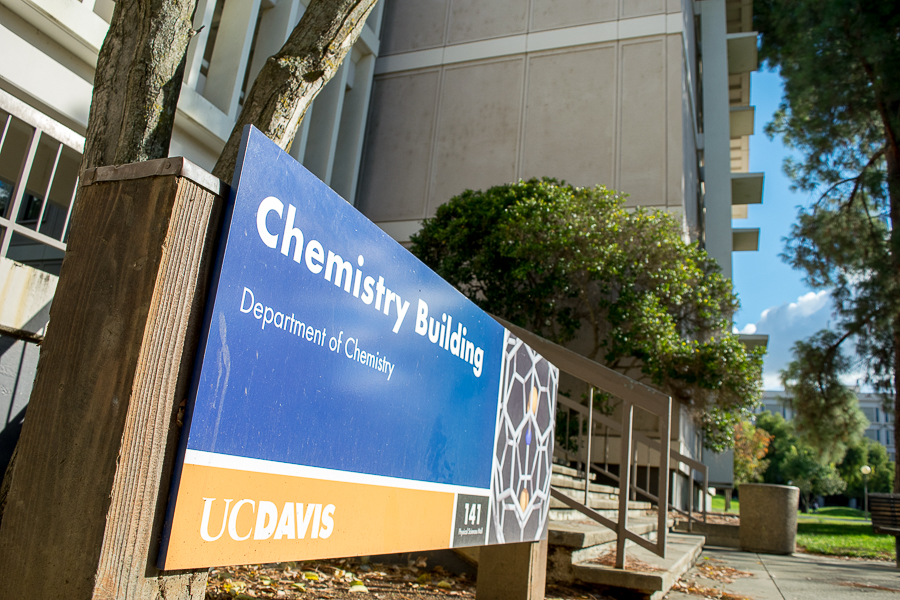
Projects will focus on adding new, safer equipment with more modern design
Earlier this month, Interim Provost and Executive Vice Chancellor Ken Burtis announced at a Department of Chemistry meeting that the university is going to begin working on multiple projects to help upgrade many areas within the Chemistry Complex.
Bill Starr, senior project manager at UC Davis Design and Construction Management, said that the university has been considering these renovations for over eight years and decided to finally proceed with the project without state funding.
“For many years the chemistry renovations were on the campus’ plan for state funds, however, the projects were never funded,” Starr said via e-mail. “State funding was eventually provided for seismic corrections, but it became clear to the campus that, absent further state involvement, the campus needed to invest in chemistry for renovation beyond the seismic corrections.”
There will be three active projects funding the renovations: the Chemistry Safety Improvements, Chemistry Addition and Phase 1 Renovation (CAP1R) and the Chemistry Seismic and Life Safety corrections.
The Chemistry Safety Improvements is a $1.5 million campus-funded project that is intended to increase security and safety in both buildings with improvements such as emergency lighting and door access controls.
The $56 million CAP1R project is expected to reshape many aspects of the Chemistry Complex, renovating the first floor to add new research laboratories, office and interdisciplinary collaboration space and improvements to the electrical and exhaust capacities of existing labs. There will also be a three-story addition on the west face of the Chemistry Building that will provide a new front door and increase the area of the building by 20 percent.
The new lab and office space will be able to accommodate growth and provide a new design for more modern, high-capacity labs as well as interdisciplinary collaboration space for chemistry-based disciplines.
There will be improvements to the Chemistry Building’s exhaust and electrical systems, including an increase in fume hoods, access to standby electrical power and complete renewal of the building’s cooling and heating systems.
The $35 million Chemistry Seismic and Life Safety corrections, which is already in the works, will add fire suppression to improve the seismic performance of the Chemistry Complex. It will allow standby electrical power available for critical equipment in the Chemistry Annex, renovate restrooms and provide landscaped ramps for access to both buildings.
The construction of the Chemistry Safety Improvements project is underway now and scheduled to be complete in December. The Chemistry Seismic and Life Safety Corrections will start begin this summer and CAP1R will start in the summer of 2018.
The Chemistry Building and the Chemistry Annex were both constructed over 45 years ago, with much of the lab space designed for undergraduate teaching. Over the years, the buildings and systems have aged, and there has been an increase in faculty and student population. There has also been a need for safer and more energy-efficient laboratories, and the buildings now almost exclusively house research laboratories. This all called for an improved and upgraded facility.
Scott Berg, chemistry facilities manager, said that these renovations are long-awaited due to the accumulating issues within the buildings, and that these changes will lead to reallocations in the coming months.
“The chemistry buildings have a long list of problems and deficiencies,” Berg said. “Inadequate space for teaching and research, electrically underpowered, aging utilities and sinking basement floors are just the top of the list. Chemistry has absolutely no physical space left to continue growing at the rate we have seen in recent years.”
Berg says the Chemistry Department can expect to have research projects and labs disrupted and relocated as the buildings are retrofitted for earthquakes. The department hopes to be able to move the researchers and students into renovated and modernized lab space if given proper funding.
Ace Gita Galermo, an analytical chemistry Ph.D candidate who works for the Lebrilla lab within the chemistry complex, believes these renovations would help improve students’ learning and create an even better image for the campus.
“Not only would scientists have access to the proper means for conducting their research, but it would introduce a whole new level of confidence for our students,” Galermo said. “Since UC Davis has been labeled as one of the top research universities in the world, now it is time for us to look the part. Research has become much more advanced over the past several decades, and we are in need of a building that is as technologically advanced as the scientists and instruments which occupy it.”
Written by: Demi Caceres — campus@theaggie.org



